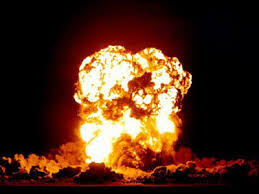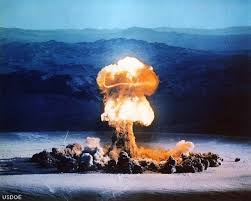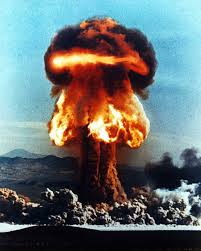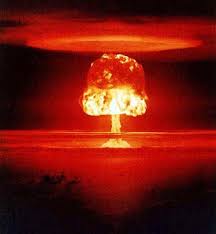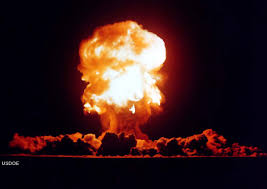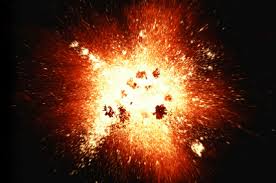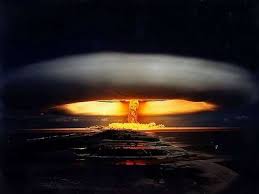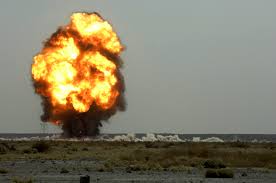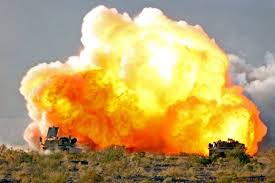Intermittent explosive disorder (IED) is a behavioral disorder characterized by extreme expressions of anger, often to the point of uncontrollable rage, that are disproportionate to the situation at hand. IED is marked by several discrete episodes of failure to resist aggressive impulses that result in serious assaultive acts or destruction of property. It occurs most often in young men.
IED should be distinguished from Personality Change Due to a General Medical Condition, Aggressive Type, which is diagnosed when the pattern of aggressive episodes is judged to be due to the direct physiological effects of a diagnosable general medical condition.
IED attacks are out of proportion to the social stressors triggering them and are not due to another mental disorder or the effects of drugs or alcohol, according to the Diagnostic and Statistical Manual of Mental Disorders, Fourth Edition (DSM-IV).
This is more common than once thought, according to study funded by the National Institute of Mental Health in a June 2006, but is relatively rare in people aged 60 and older. Intermittent explosive disorder "is very widely distributed in the population rather than being concentrated in any one segment of society," one researcher writes.
People with intermittent explosive disorder may have an imbalance in the amount of serotonin and testosterone in their brains. Individuals with Intermittent Explosive Disorder sometimes describe intense impulses to be aggressive prior to their aggressive acts.
Signs and symptoms--
Explosive eruptions, usually lasting 10 to 20 minutes, often result in injuries and the deliberate destruction of property. These episodes may occur in clusters or be separated by weeks or months of nonaggression.
Aggressive episodes may be preceded or accompanied by:
· Chest tightness
· Head pressure
· Hearing an echo
· Palpitations
· Tingling
· Tremor
Causes--
Most people with this disorder grew up in families where explosive behavior and verbal and physical abuse were common. Being exposed to this type of violence at an early age makes it more likely for these children to exhibit these same traits as they mature.
There may also be a genetic component, causing the disorder to be passed down from parents to children. Other conditions that must be ruled out before making a diagnosis of intermittent explosive disorder include delirium, dementia, oppositional defiant disorder, antisocial personality disorder, schizophrenia, panic attacks, and substance withdrawal or intoxication. Lives have been torn apart by this disorder, but medications can help control you or your loved one's aggressive impulses.
Many psychiatrists do not place intermittent explosive disorder into a separate clinical category, but consider it a symptom of other psychiatric and mental disorders. Many psychiatric disorders are associated with impulsive aggression, but some individuals demonstrate violent outbursts of rage, which are variously referred to as rage attacks, anger attacks, episodic dyscontrol, or intermittent explosive disorder.
Explosive episodes may be associated with affective symptoms such as irritability or rage, increased energy, and racing thoughts during the aggressive impulses and acts, and rapid onset of depressed mood and fatigue after the acts. Some individuals may also report that their aggressive episodes are often preceded or accompanied by symptoms such as tingling, tremors, palpitations, chest tightness, head pressure, or hearing an echo.
Some disorders have similar or even the same symptoms. However, women also have problematic impulsive aggression, and some women have reported an increase in intermittent explosive symptoms when they are premenstrual. The aggressive episodes may take the form of "spells" or "attacks," with symptoms beginning minutes to hours before the actual acting-out. If a patient appears to be intoxicated by a drug of abuse or suffering symptoms of withdrawal, a doctor may order a toxicology screen of the patient's blood or urine to determine the possible source of the acting -out.
Age, race and socioeconomic status don't seem to be factors in predicting who suffers from IED-but gender does: Studies find nearly twice as many men display symptoms than women. Clinicians may be at fault for concentrating on secondary symptoms, such as anxiety or depression, and not asking about outbursts of anger. Sometimes what appears as discipline problems are symptoms of a pathology.
Risk factors--
People with other mental health problems - such as mood disorders, anxiety disorders and eating disorders - may be more likely to also have intermittent explosive disorder. Substance abuse is another risk factor. This disorder may result in job loss, school suspension, divorce, auto accidents or incarceration.
IED, an imbalance in brain chemicals, affects up to one in 20 people -- more men than women. IED-related injuries occur 180 times per 100 lifetime cases and is significantly comorbid with most DSM-IV mood, anxiety, and substance disorders.
Individuals with narcissistic, obsessive, paranoid or schizoid traits may be especially prone to intermittent explosive disorder. As children, they may have exhibited severe temper tantrums and other behavioral problems, such as stealing and fire setting.
IED can fuel road rage, spousal abuse, etc., and may also predispose people to other mental illnesses, such as depression and anxiety, and substance abuse problems. IED could very well be an overlooked explanation for the frequency of violent crimes committed by violent offenders.
Individuals with intermittent explosive disorder may attack others and their possessions, causing bodily injury and property damage. Later, they may feel remorse, regret or embarrassment about the aggression.
Screening and diagnosis--
The diagnosis is based on these criteria:
· Multiple incidents in which the person failed to resist aggressive impulses that resulted in deliberate destruction of property or assault of another person.
· The aggressive episodes aren't accounted for by another mental disorder, and are not due to the effects of a drug or a general medical condition.
· The degree of aggressiveness expressed during the incidents is completely out of proportion with the precipitating event.
Other conditions that must be ruled out before making a diagnosis of intermittent explosive disorder include delirium, dementia, oppositional defiant disorder, antisocial personality disorder, schizophrenia, panic attacks, and substance withdrawal or intoxication.
People with intermittent explosive disorder may have an imbalance in the amount of serotonin and testosterone in their brains. They may also show some minor irregularities in neurological signs and electroencephalograms (EEGs).
Treatment--
Many different types of drugs are used to help control intermittent explosive disorder, including:
· Anti-anxiety agents in the benzodiazepine family, such as diazepam (Valium), lorazepam (Ativan) and alprazolam (Xanax).
· Anticonvulsants, such as carbamazepine (Tegretol), phenytoin (Dilantin), gabapentin (Neurontin) and lamotrigine (Lamictal).
· Antidepressants, such as fluoxetine (Prozac) and paroxetine (Paxil).
· Mood regulators like lithium and propranolol (Inderal).
Group counseling sessions, focused on rage management, also have proved helpful. Some people have found relaxation techniques useful in neutralizing anger.
Treatment could involve medication or therapy including behavioral modification, with the best prognosis utilizing a combination of the two. Treatment with antidepressants, including those that target serotonin receptors in the brain, is often helpful, along with behavior therapy akin to anger management.
If the patient appears to be a danger to himself or others, he may be committed against his will for further treatment. Researchers found that although 88% of individuals with IED studied were upset by the results of their explosive outbursts, but only 13% had ever asked for treatment in dealing with it.
Since the cause(s) of IED are not fully understood as of the early 2000s, preventive strategies should focus on treatment of young children (particularly boys) who may be at risk for IED before they enter adolescence. These patients often need psychological treatment along with medication treatment, and it is often very helpful to base their psychological treatment on addiction-based models.
Some patients with IED, often adult males who have assaulted their wives and are trying to save their marriages, are aware that their outbursts are not normal and seek treatment to control them. Younger males with IED are more likely to be referred for diagnosis and treatment by school authorities or the juvenile justice system, or brought to the doctor by concerned parents.
The success of treatment with lithium and other mood-stabilizing medications is consistent with findings that patients with IED have a high lifetime rate of bipolar disorder. Given its earlier age-of-onset, identifying IED early - perhaps in school-based violence prevention programs - and providing early treatment might prevent some of the associated psychopathology.
While 60 percent of people with IED seek professional treatment for a mood or substance problem, only about 29 percent receive treatment for their anger.
